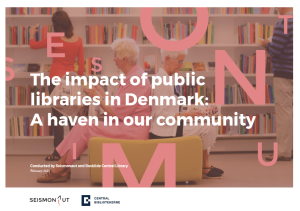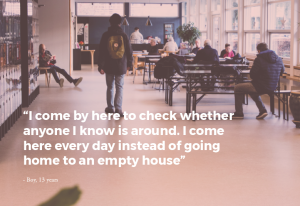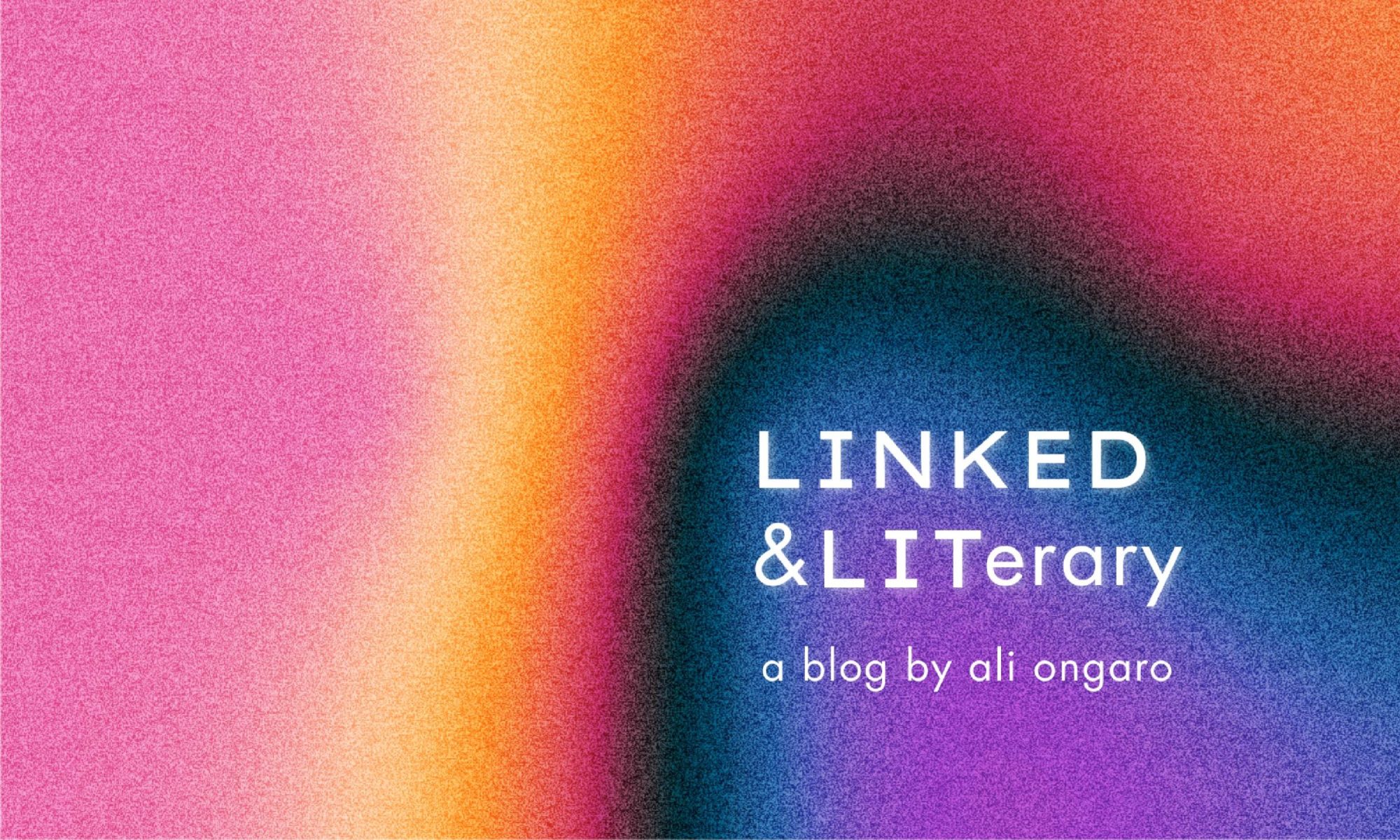
Image retrieved from https://christianlauersen.net/2021/04/19/a-haven-in-our-community-the-impact-and-value-of-public-libraries/
This week’s module in the Hyperlinked Library course we are exploring Hyperlinked Environments. In this choose your own adventure model, I was able to pick my topic of the week. Last week, I reflected on my local library system and how they are engaging their communities to be a participatory library. This week, I wanted to examine an international library environment to see if I could find an example of a participatory library abroad. With no surprise, I looked through the material presented to us this week and found great examples in Danish libraries.
Lauersen, Director of Libraries and Citizens Services in Roskilde Municipality writes about “the value of a library” and its cultural impact in a 2020 post on his blog. By using the framework of a cultural study conducted in 2019 by the Arts Council England, Lauersen examines his own local libraries in Denmark. Lauersen, along with a consulting firm Seismonaut, developed The Impact Compass. This framework outlines four major impacts of public libraries on patrons: emotional, intellectual, creative and social (Lauersen, 2020). By looking at public libraries through this lens, information professionals can get a cultural look at their libraries. The goal of this framework is to look beyond the data of how many patrons enter a library and get a better understanding of the impact libraries have on their communities. Lauersen (2021) states “we need insights and understanding beyond usage to have a sound and constructive debate about why libraries matter and how we should shape them to lift future challenges.” By definition, the application of this study makes Roskilde Municipality libraries participatory libraries.
The results of this The Impact Compass informed that in Danish communities, “public libraries help form and maintain communities” (Lauersen, 2021). They were able to collect data and information directly from library patrons to see why they interacted with the libraries. Reference Figure 1 below as an example. They also discovered that “the public library promotes communities – both in the direct sense, by being a place where Danes meet and experience togetherness and belonging with others, and indirectly by Danes experiencing the public library as a common property” (Lauersen, 2021). They used these results to inform decision-making within their library system.

Figure 1, retrieved from https://christianlauersen.net/2021/04/19/a-haven-in-our-community-the-impact-and-value-of-public-libraries/
Lauersen and the team at Seismonaut saw so much interest in their study that they developed The Impact Compass as a guide on how to implement this cultural study at your own library. It was first developed in Danish then translated into English to reach a broader audience. This guide instructs people to “use the Impact Compass as a tool to develop and evaluate activities at the library.” This guide encourages both qualitative and quantitative research methods to engage communities in activities like surveys and interviews. In The Impact Compass worksheets are provided as a starting point for libraries to begin to think about their environments in a cultural lens.
When thinking about participatory libraries and how you can engage your town communities, it’s important to also look outwards and see what other public libraries are doing. You might find inspiration or, like in the case of Roskilde Municipality public libraries, an open source guide on how to engage with your community in a cultural lens! The Impact Compass provides relevant research and information to apply to American public libraries. I can see this framework to be used in many libraries. I would be interested in applying this to my own local library system to see what new ways we can engage with our local environment to become a participatory library.
References
Lauersen, C. (2020). A new language for the value and impact of libraries: Design and first findings. The Library Lab. Retrieved from https://christianlauersen.net/2020/12/02/a-new-language-for-the-value-and-impact-of-libraries-design-and-first-findings/
Lauersen, C. (2021). A haven in our community: The impact and value of public libraries. The Library Lab. Retrieved from https://christianlauersen.net/2021/04/19/a-haven-in-our-community-the-impact-and-value-of-public-libraries/
Seismonaut and Roskilde Central Library. (2021). A guide to the Impact Compass The impact of public libraries in Denmark: A haven in our community. Seismonaut and Roskilde Central Library. Retrieved from https://287.hyperlib.sjsu.edu/wp-content/uploads/2022/03/en_brugsguide_06.05.21_0.pdf

@ali0 I enjoyed this as well. Your exploration of the compass made me think about what’s happening here in our own area as the elk Rapids district library prepares to renovate, an old factory into a much larger and accessible library. It must go beyond just usage statistics as you point out from Christian’s work. All stakeholder should be involved this ties in so well with the previous post I just read.
Hi Ali,
I was drawn to your blog because you referenced Danish Libraries: I find them to be some of the most innovative I have come across in my studies. They never cease to amaze me with their programs (I am particular to The Human Library,) and their welcoming architecture. I have visited Denmark briefly, once, but I did not have the chance to visit any libraries, sadly.
I have never heard about the Compass, and I was glad to read about it through your post: thank you for introducing me to this concept. I wish my local or state libraries had the vision and money to follow suit with the Danish library innovations. What an inspiration!
All the best,
Elena